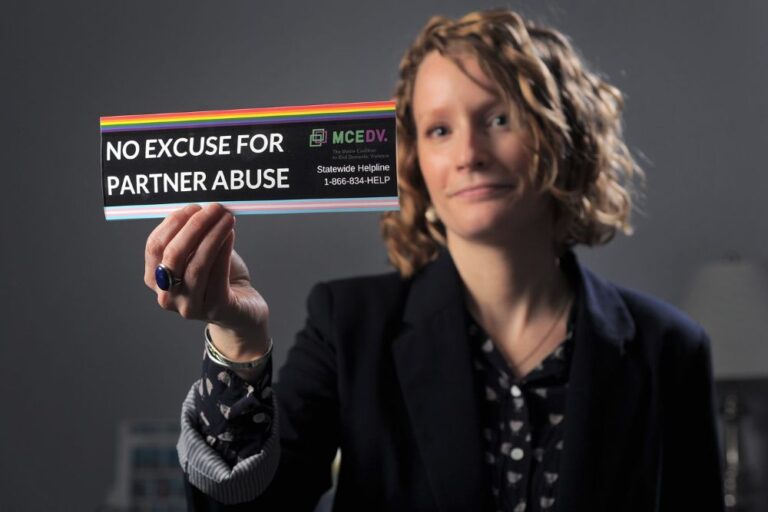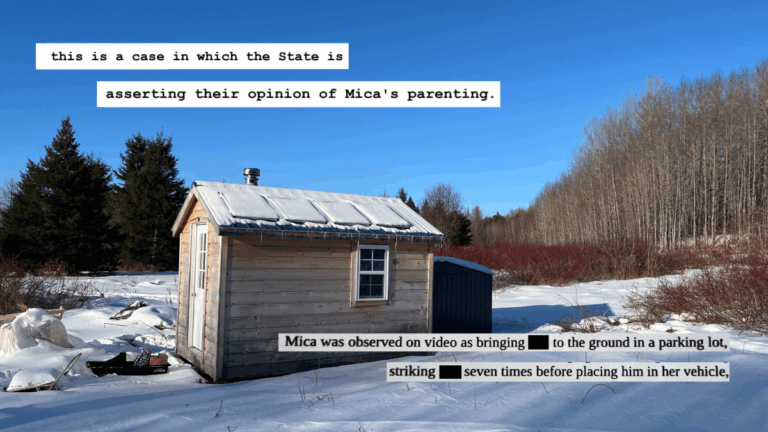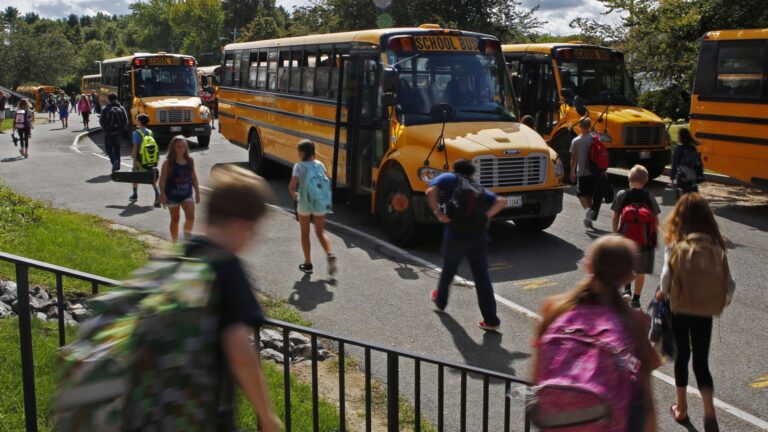When last year’s winter storms devastated the coast, Sam Belknap’s family wharf on Round Pond harbor in Bristol was saved by its concrete floor. The floor, which Belknap’s family poured years ago when they put in a seafood processing room, provided enough weight to keep most of the wharf from floating away.
As the state braces for future storms, Belknap sees the concrete floor as an example of resilience technology at work.
More than a year after a series of December 2023 and January 2024 storms caused an estimated $90 million in damage to communities, the state is moving to strengthen its preparedness and resiliency for future storms.
Jessica Reilly-Moman, director of climate and community at the Rockland-based Island Institute, said that the storms have prompted a discussion about what is to come.
“It felt like a reckoning moment,” said Reilly-Moman. “It became clear that the impacts that coastal communities were facing are new and different.”
Unlike the typical Nor’easter storms that move through the Gulf of Maine during the winter, the three storms that hit the coast head-on more than a year ago took the less common Sou’easter track, according to a 2024 report from the Maine Climate Council.
In a warmer world, Maine State Climatologist Sean Birkel said we can expect that storms will become more intense, bringing more precipitation when large systems develop. We may also see more storms take the Sou’easter track, though changes in storm frequency are hard to determine.
“Whether or not we see these more often in a given year or given decade, that’s where there’s a lot of uncertainty,” said Birkel. Warmer ocean temperatures and sea level rise along Maine’s coast only breed further questions about future storms.
Taking this uncertainty into consideration means shifting from recovery to resilience.
But Belknap, who works as the director for the Center for Marine Economy at the Island Institute, said this shift can be challenging given that even the long-term solutions that seem straightforward for businesses, like putting in a heavy floor, are expensive.
“It’s one of those chicken and egg situations whereby taking the time to truly rebuild towards resilience is often at odds with maintaining a functional and profitable business,” Belknap told The Maine Monitor.
For homeowners, other solutions, like building seawalls, can be difficult to do at the scale necessary for community-level resilience.
Easing these challenges is a priority for lawmakers in the 2025 legislative session. In January, Rep. Bob Foley (R-Wells) introduced an emergency bill, L.D. 228, to allow property owners to raise coastal seawalls by up to two feet.
Currently, regulations prohibit construction of new seawalls or additions to existing seawalls within the coastal sand dune ecosystem. The only exception is if new construction is deemed by the Department of Environmental Protection to be less damaging to the sand dune system, wildlife habitat and adjacent properties.
Foley’s bill cites sea level rise for the proposed change. Both Belknap and Reilly-Moman raised questions about the bill, saying it is an example of a “hard infrastructure” approach to mitigation as opposed to nature-based solutions, which supporters say account more holistically for impacts to a coastal ecosystem and surrounding properties. “Softer” approaches, such as planting native plants, often struggle to hold up against Maine’s wind and waves.
Walls, however, accelerate erosion at their base and around their edges, worsening the issue in the long run and creating problems for neighbors.
“If one property owner is able to make an investment and their neighbors are not for whatever reason, it is those neighbors that will bear the impact of future storms as a result of that one property investing and protecting itself,” Belknap said.
Last week, a bipartisan bill sponsored by Democratic and Republican leadership on behalf of Gov. Janet Mills garnered widespread support at a Feb. 28 public hearing.
The bill, L.D. 1, incorporates recommendations made by the Infrastructure Rebuilding and Resilience Commission the governor established last spring. The bill proposes three initiatives, which include creating a home resiliency program, launching a state resilience office and “flood-ready” program and enhancing hazard mitigation resources and communications.
Two of the bill’s initiatives explicitly mention leveraging federal dollars from the National Oceanographic and Atmospheric Administration and the Federal Emergency Management Agency, two agencies whose funding sources have been brought into question amidst ongoing changes to federal spending. Reilly-Moman said there is a “climate of uncertainty” for those relying on federal grants like the ones FEMA provides.
Within the public sector, Reilly-Moman said this presents a chance for the state to consider how it can diversify funding sources to include local philanthropy and businesses.
“The coastal values that we already have are really a perfect fit for this kind of uncertainty,” Reilly-Moman said. “I think that Maine is uniquely positioned to take this as an opportunity.”







